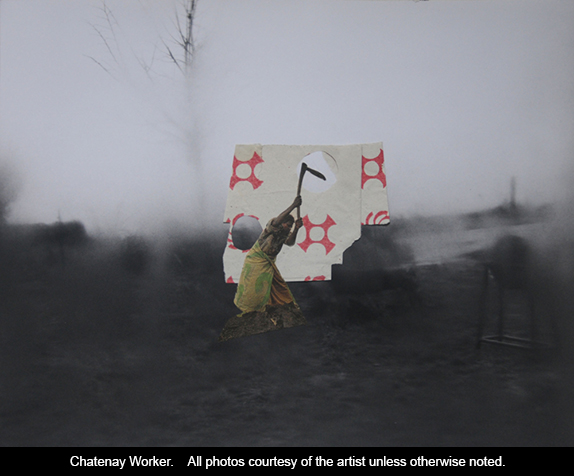
The relation between what we see
and what we know is never settled.
—John Berger
We were in North Carolina for a week of events, first at Duke University and then at the University of North Carolina - Chapel Hill. As on most such trips, there was little time for anything but work and grabbing opportunities in between jobs to rest and renew. On our last day, however, we found ourselves with a block of free time. How to use it? All sorts of suggestions were made; the area is rich in history and natural beauty. Someone told us we should take in an art show currently on exhibition at Preservation Chapel Hill’s Horace Williams House. I am so glad we did.
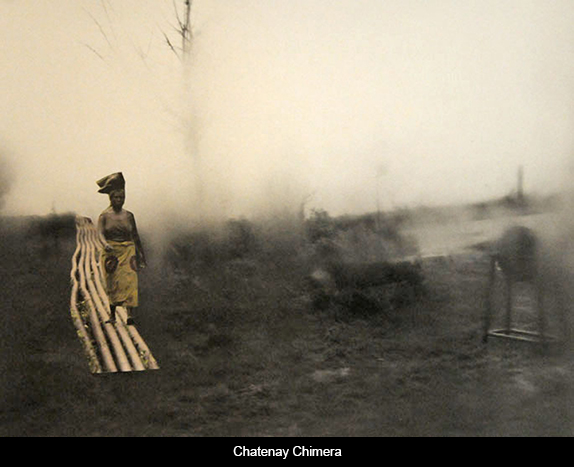
elin o’Hare slavick’s work is one part Surrealist, one part incisive feminist wit, and one part just terrific art. Her anti-violence pro-respect for difference worldview is evident and powerful, but in surprising ways. The politics are palpable, but magic is always there to carry the viewer to unexpected spheres. This is a large show—56 pieces ranging from intimate table-top collages reminiscent of family photographs in individual frames, to larger wall-hung pieces framed for this exhibition, as the artist says, “uniquely and quickly, in the spirit of their creation.”

A partial list of these pieces’ names shows the breadth and depth of the artist’s concerns: The Face of the Bee, Syrian Doctor, The Monkey Painter And Vain Dog, Saint Agatha, Milk Sacks of Poetry (for Emily Dickinson), The Girl With The Fire Tattoo Stockholm, Psychoanalysis, Boys Will Be Boys, Free Congo, When You build a Sailing Vessel You Guarantee a Shipwreck, Blood Sorority, and Hot Air. One can imagine where and how o’Hare Slavick gets her inspiration: from headline-grabbing events and important historic figures to personal moments, thoughts, and dreams.
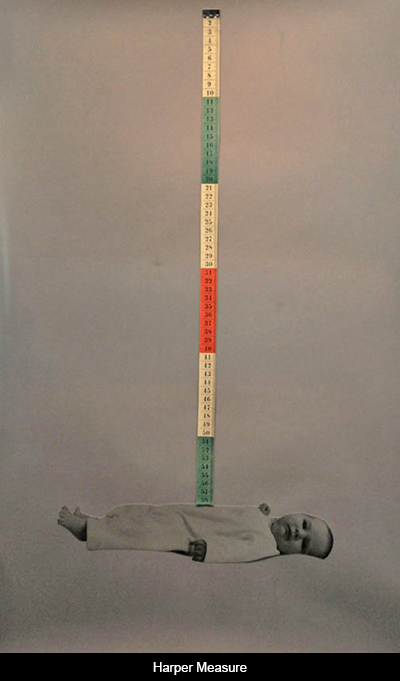
o’Hare slavick calls these collages Heterotopias, a concept in human geography elaborated by the philosopher Michel Foucault to describe places and spaces that function in non-hegemonic conditions. She says they are “spaces of otherness, neither here nor there, simultaneously physical and mental, such as the space of a phone call or the moment when you see yourself in the mirror.”
In our contemporary world, particularly in highly “developed” societies like ours, hegemony has too often become the human condition. We must constantly question the reality constructed to suppress and control. Or we should. Corporate America presents us with a careful tableau, where much too often down is up, reality is distorted, fabricated need rules every part of our living, and even language has been transformed so that it means the opposite of what it once did. We live on the far side of Alice’s looking glass, but that prophetic book described a space from which Alice eventually was able to return. For us, unless we are able to fight our way out, there is no return.

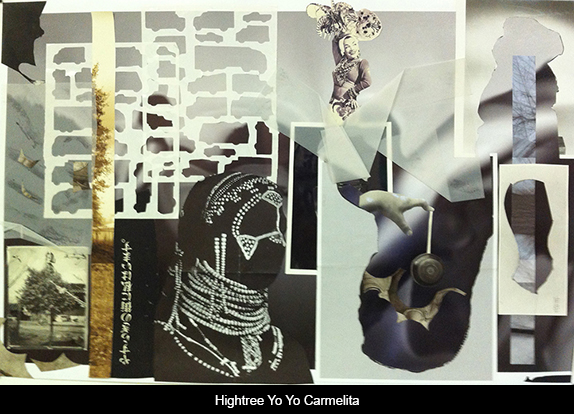
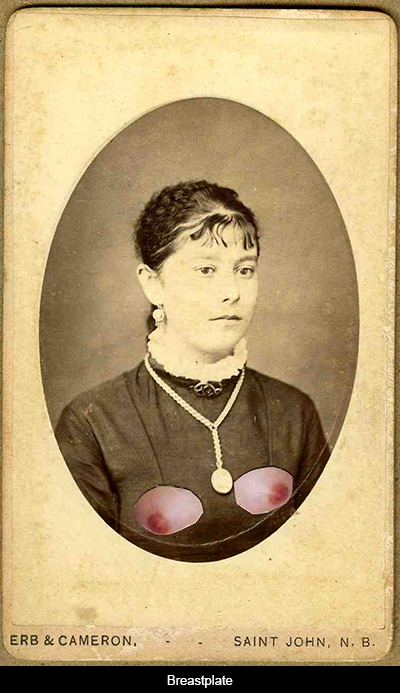
Perhaps this is why art that unpeels the layers of subterfuge speaks to me so profoundly. I am delighted when an artist’s sensibility and talent combine to let us glimpse the meaning beneath the calculated non-meaning that surrounds us. And o’Hare slavick’s work is not bound by a particular culture. It has an international feel. One piece evokes some part of our traditional US heritage, while the next takes you to one that is entirely foreign.
The artist says:
Many [of my collages] are made while traveling – in Canada, France, Turkey, Germany, Brazil, France, Japan, the Netherlands, and in the United States. Collages are hysterical surprises, fragmented landscapes, subconscious or delirious layers, automatic narratives in the surrealist spirit. [They are] means to collide times, simultaneously forgetting and remembering, whimsically collecting and discarding scraps of everything, to combine the unconscious space of dreams and the foreigner’s zone with the stranger’s perspective, to spin a magical narrative out of organic elements, tape, childhood drawings, playing cards, discarded books, book covers, postcards, art historical reproductions, magazines, Xerox transfers, anatomic illustrations, an old bible.
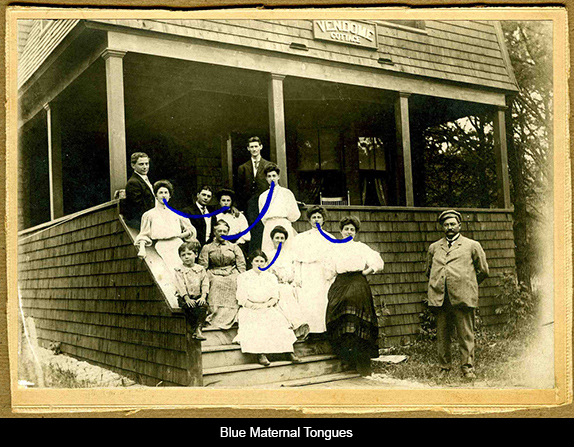
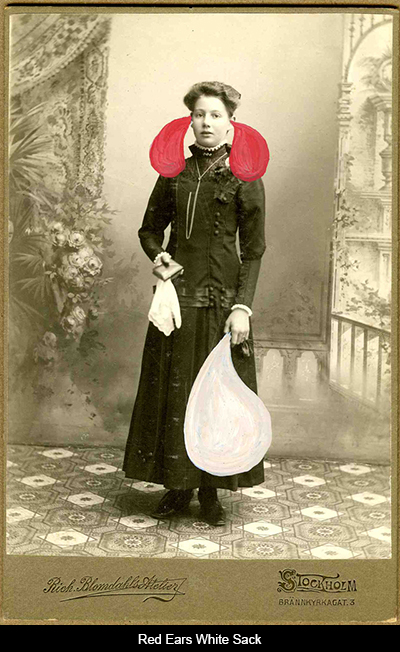
I am struck by the sense that outsiders may see more clearly, or at least through a different prism, than those who are born into a given situation. I have experienced this often. And I love the idea of hysterical surprises. Fragmenting landscape is, perhaps, the only way to allow us to see the forces that shape it and the work of geological time in its formation. Delirious layers, the collision of different times, simultaneously forgetting and remembering: how else may we decipher the efforts to blind and strike us deaf while at the same time help us retrieve that memory so vital to life’s continuance?
Combining such disparate materials depends for its success on the artist’s skill and the worldview that informs her. o’Hare slavick is a feminist with a sense of humor, a professional with a solid history of work. She received her MFA in Photography from the School of the Art Institute of Chicago and her BA from Sarah Lawrence College. She is Professor of Visual Art, Theory and Practice at the University of North Carolina at Chapel Hill. She has exhibited internationally, and is the author of several books, among them Bomb After Bomb: A Violent Cartography, with a foreword by Howard Zinn and essay by Carol Mavor, and After Hiroshima, with an essay by James Elkins. She is also a curator and activist.


The Horace Williams exhibit marks the first time that o’Hare slavick’s collages have been shown together. Most were made in the last year. I hope we will have the opportunity of seeing a body of her work here in New Mexico.

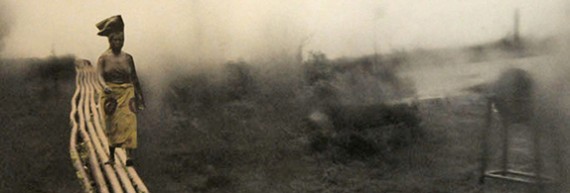


Responses to “Another Way of Seeing: elin o’Hare slavick”